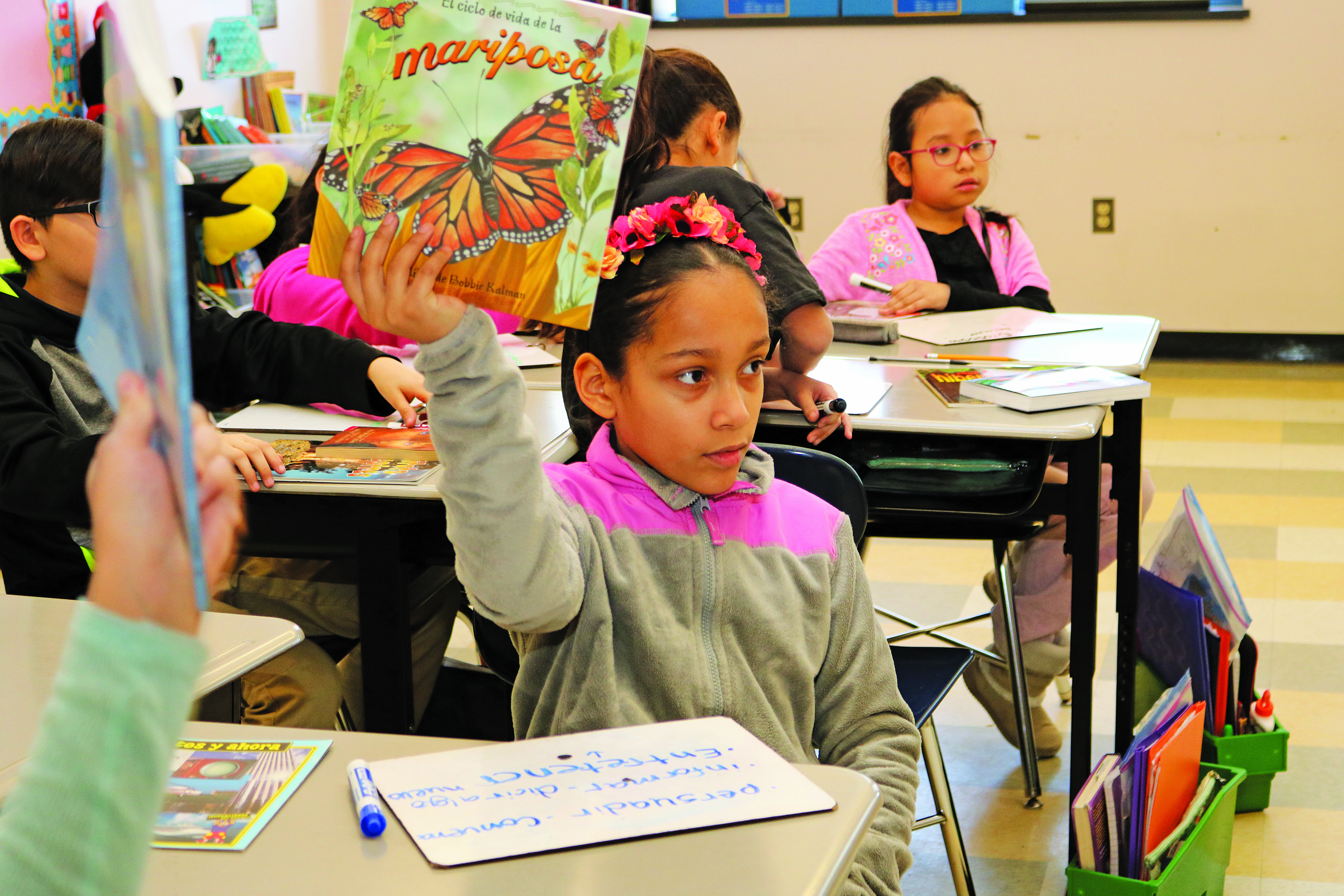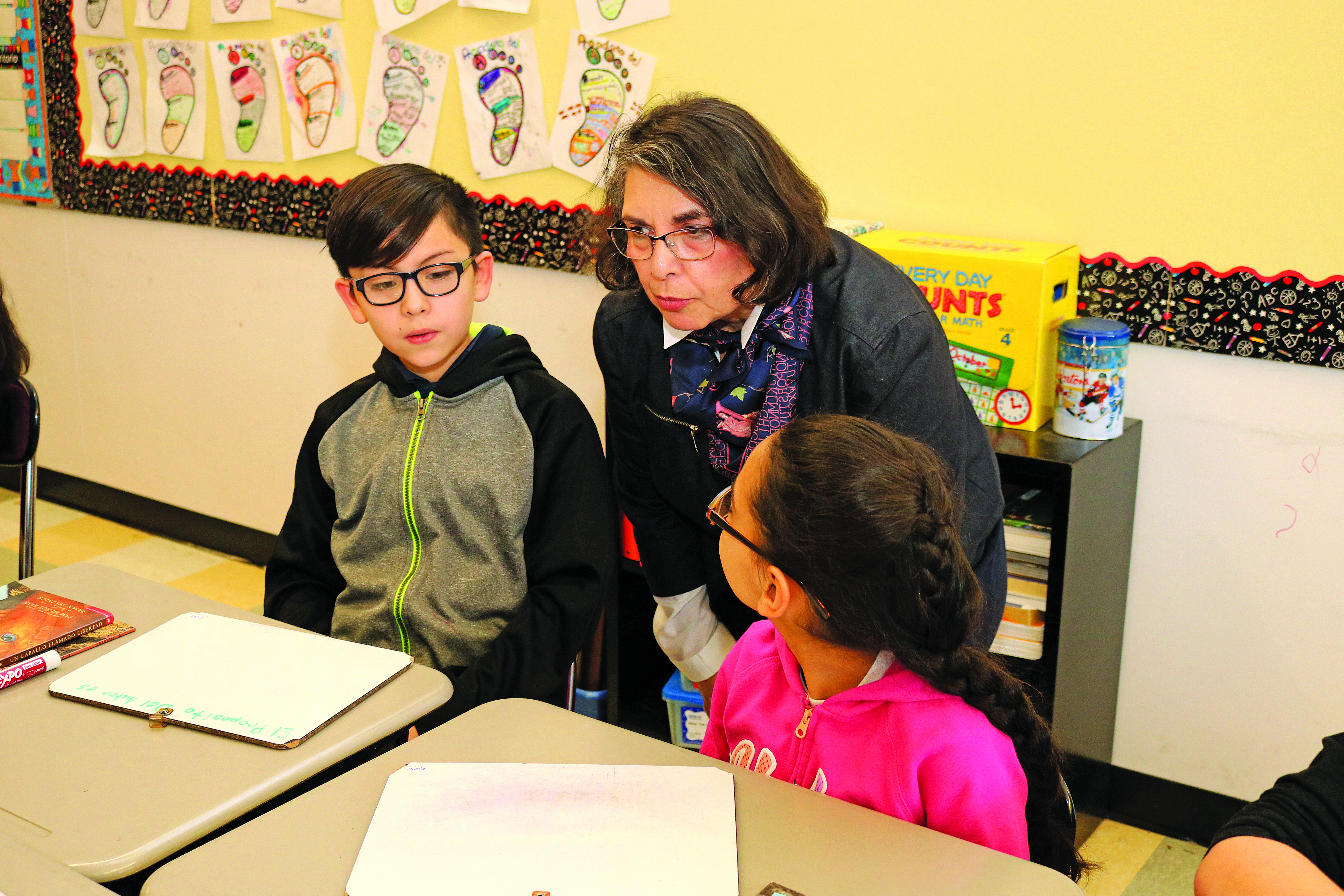LOOK Act provides needed flexibility
LOOK Act provides needed flexibility
A 15-year-old law governing how English learners are taught in Massachusetts schools was repealed last November and replaced with a measure that gives school districts more flexibility to create programs that meet the needs of their students and provides parents with more power to ask for alternative language acquisition programs.
The MTA strongly supported the new law — called the Language Opportunity for Our Kids Act — which was sponsored by Sen. Sal DiDomenico (D-Everett). Approved nearly unanimously by both the House and Senate, it opens the door for changes in how more than 90,000 English learners in Massachusetts are educated.
“Passage of the LOOK Act will not only create new opportunities for our students; it also honors the contributions of our immigrant communities,” said MTA President Barbara Madeloni. “It recognizes there is great value to all students becoming bilingual and bicultural.”
The LOOK Act does not require districts to change their instructional strategies. Rather, it allows them to do so without having to jump through the hoops required under the old law. It also creates a new Seal of Biliteracy to recognize high school graduates who speak, read and write in two languages.

Unz strongly objected to transitional bilingual education, the default program at the time, under which EL students were taught using a mix of their native language and English, with increasing amounts of English over time. Unz and his supporters claimed that this form of education was holding EL students back and that they would benefit from being immersed in English right away, regardless of their age, education level or background.
Unz successfully promoted an English-only initiative in California in 1998 and then won passage of laws in Arizona in 2000 and Massachusetts in 2002. As described in the Massachusetts ballot initiative summary, “This proposed law would replace the current state law providing for transitional bilingual education in public schools with a law requiring that, with limited exceptions, all public school children must be taught English by being taught all subjects in English and being placed in English language classrooms.”
After the law was passed, some districts created separate SEI classrooms. Others assigned English learners to regular classrooms while providing them with additional English as a Second Language instruction. The programs varied, but the mandate was clear: Languages other than English were to be used sparingly for purposes of clarification, not for instruction.
Many ESL and bilingual education teachers, as well as regular classroom teachers, had expressed concerns for years that the restrictive English-only model didn’t serve all students well.
In 2010, the Rappaport Institute at Harvard’s Kennedy School of Government released a report commissioned by the state that attempted to answer the question of whether the SEI law was improving student outcomes. The study found that achievement gaps were just as wide under the law as they had been before, and in some cases they were wider.
One year later, the U.S. Department of Justice notified Massachusetts education officials that teachers were inadequately trained in how to educate English learners under the SEI model. In response, the state created the RETELL program — Rethinking Equity and Teaching for English Language Learners — which required teachers in core academic subjects to take a graduate-level course provided by the state in SEI instruction.
The RETELL course itself received mixed reviews from educators, but it became clear that something had to change as more and more teachers had English learners in their classes. The number of EL students in the state has doubled since 2002; EL students now make up 9.5 percent of the student population.
Vula Roumis, a bilingual education department head in Brockton, said she has seen benefits from the RETELL program.

“I’ve seen there is a common language between ESL teachers and content-area teachers,” said Roumis, who is president of MATSOL, an association of educators of English learners. “They can understand foundational things going on and why teaching content should include additional strategies.
She and Kellie Jones, director of bilingual education in Brockton, believe that more needs to be done. Teachers who were not required to take the course — such as specialists, counselors and librarians — also need to know strategies for communicating with and educating EL students, they said.
But better SEI instruction isn’t the only solution. Jones, Roumis and bilingual educators across the state made the case to the Legislature that districts need more flexibility to design programs that meet the needs of their students.
The Rappaport study gave that argument a boost. The authors concluded, “Overall, there is likely no one-size-fits-all approach that serves all [limited-English-proficient] students equally well. What works in one district, school, or classroom may not necessarily be effective in another.”
In the end, the case for change won the day. Districts that have only implemented SEI programs may now want to look to places like Brockton and Framingham, which took advantage of the waiver opportunities in the SEI law to develop alternatives. Brockton has more than 4,100 EL students who speak languages ranging from Creole to Yoruba. The district has a variety of programs for students and staff who meet with parents to discuss options after a student’s language skills and needs are assessed.
Among other services, there is a transitional bilingual education program at the middle and high schools and an academy for EL students whose education was interrupted.
The district also has a very popular two-way Spanish/English program housed in the Manthala George Jr. Elementary School and a brand new Portuguese immersion program. The district plans to launch a French immersion program in the fall, mainly appealing to students who have relatives from French-speaking Caribbean islands and Africa, as well as English-speaking families who want their children to know more than one language.
Roumis was particularly enthusiastic about the promise of twoway bilingual programs. The Spanish/ English program always has a long waiting list.
On a recent morning, students in Leticia Roseman’s fourth-grade classroom at the George School were reading books and answering questions posed by their teacher in Spanish. They made speaking the language look effortless. In a classroom across the hall, another group of students was doing the same, except in English.
For half the day, the students learn math, science and social studies in Spanish, and for the other half they learn those subjects in English.
“We have over 40 years of bilingual and responsive programming for students,”
says Kellie Jones, Brockton’s director of bilingual education.
It’s a 50/50 program in all respects. Half of the students speak English as their native language; the other half speak Spanish. Each class is made up of equal numbers of students from the two language backgrounds. In a few short years, all of the students are fluent in two languages — something most adults in the U.S. never achieve.
Studies show that students in dual language programs typically outperform their peers by several measures, including flexibility in thinking and tenacity as well as more traditional test-score results.
A 2012 study by researchers Wayne Thomas and Virginia Collier for the Joint National Committee for Languages concluded, “Dual language learning has been found to be the only method of second language acquisition to facilitate the full closure of the achievement gap between English learners and English speakers in primary and secondary education.”
In 2015, Houston decided to greatly expand its dual language programs after a Rice University study found that students in the two-way programs had the best Spanish and English skills.
Will more dual language programs and other alternatives to SEI be developed across the state now that the Legislature has passed the LOOK Act?
Roumis and Jones hope so, especially in communities where parents want their children to have the opportunity to be bilingual, bicultural and biliterate.
“Brockton was the first community in Massachusetts to have bilingual programs for students,” said Jones, a past president of MATSOL. “We have over 40 years of bilingual and responsive programming for students. Part of that history and the activism of our community influence how we responded to [the Unz law] and how we work even to this day.”
Roumis added, “Brockton’s nickname is the City of Champions, and you might say the schools are real champions for the community. I always remember what Kellie said once: ‘We are a Gateway City, but we should be called a Language Gateway City for all the offerings we have here.’”